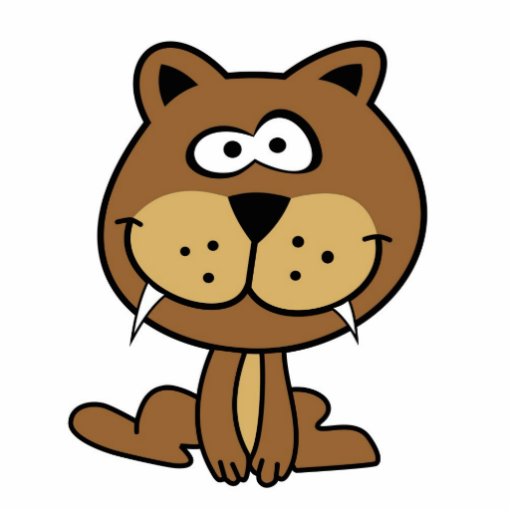Funny Cartoon Animations Biography
Source (Google.com.pk)
Chuck Jones joined Leon Schlesinger Productions, the independent studio that produced Looney Tunes and Merrie Melodies for Warner Bros., in 1933 as an assistant animator. In 1935, he was promoted to animator, and assigned to work with new Schlesinger director Tex Avery. There was no room for the new Avery unit in Schlesinger's small studio, so Avery, Jones, and fellow animators Bob Clampett, Virgil Ross, and Sid Sutherland were moved into a small adjacent building they dubbed "Termite Terrace". When Clampett was promoted to director in 1937, Jones was assigned to his unit; the Clampett unit was briefly assigned to work with Jones' old employer, Ub Iwerks, when Iwerks subcontracted four cartoons to Schlesinger in 1937. Jones became a director (or "supervisor", the original title for an animation director in the studio) himself in 1938 when Frank Tashlin left the studio. Jones' first cartoon was The Night Watchman, which featured a cute kitten who would later evolve into Sniffles the mouse.
Many of Jones' cartoons of the 1930s and early 1940s were lavishly animated, but audiences and fellow Schlesinger staff members found them lacking in genuine humor. Often slow-moving and overbearing with "cuteness", Jones' early cartoons were an attempt to follow in the footsteps of Walt Disney's shorts (especially with such cartoons as Tom Thumb in Trouble and the Sniffles cartoons). Jones finally left traditional animation conventions with the cartoon The Dover Boys in 1942. Jones credits this cartoon as the film where he "learned how to be funny." The Dover Boys is also one of the first uses of stylized animation in American film, breaking away from the more realistic animation styles influenced by the Disney Studio. This was also the period where Jones created many of his lesser-known characters, including Charlie Dog, Hubie and Bertie, and The Three Bears. Jones' shorts from this period starring these characters represent some of his earliest classics that were strictly intended to be funny.
'The Outpost', Private Snafu cartoon directed by Chuck Jones in 1944
During the World War II years, Jones worked closely with Theodor Geisel, better known as Dr. Seuss, to create the Private Snafu series of Army educational cartoons. Private Snafu comically educated soldiers on topics like spies and laziness in a more risque way than general audiences would have been used to at the time. Jones would later collaborate with Seuss on a number of adaptations of Seuss' books to animated form, most importantly How the Grinch Stole Christmas! in 1966.
During World War II, Jones directed such shorts as The Weakly Reporter, a 1944 short that related to shortages and rationing on the home front. During the same year, he directed Hell-Bent for Election, a campaign film for Franklin D. Roosevelt. He also directed the less-widely known Angel Puss. This cartoon contains portrayals of African-Americans that are now considered offensive. It is no longer available in any authorized release and is among the group of controversial cartoons known to animation buffs as the Censored Eleven.
A still from What's Opera, Doc?.
Jones hit his stride in the late 1940s, and continued to make his best-regarded works through the 1950s. Jones-created characters from this period includes Claude Cat, Marc Antony and Pussyfoot, Charlie Dog, Michigan J. Frog, and his three most popular creations, Marvin the Martian, Pepe LePew, the Road Runner, and Wile E. Coyote. The Road Runner cartoons, in addition to the cartoons that are considered his masterpieces (all written and conceived by Michael Maltese), Duck Amuck, One Froggy Evening, and What's Opera, Doc? are today hailed by critics as some of the best cartoons ever made.
The staff of the Jones' Unit A were as important to the success of these cartoons as Jones himself. Key members included writer Maltese, layout artist/background designer/co-director Maurice Noble, animator and co-director Abe Levitow, and animators Ken Harris and Ben Washam.
In 1950, Jones and Maltese began working on Rabbit Fire, a short that has changed Daffy Duck's personality forever. They decided to make him a totally different character; instead of the wacky, comic relief character he had been, they turned Daffy into a vain, egomaniacal prima donna wanting to steal the spotlight from Bugs Bunny. Of his versions of Bugs and Daffy, Chuck Jones has said, "Bugs is who we want to be. Daffy is who we are."
Jones remained at Warner Bros. throughout the 1950s, except for a brief period in 1953 when Warner closed the animation studio. During this interim, Jones found employment at Walt Disney Pictures, where he teamed with Ward Kimball for a four month period of uncredited work on Sleeping Beauty (1959). Upon the reopening of the Warner animation department, Jones was rehired and reunited with most of his unit.
In the early-1960s, Jones and his wife Dorothy wrote the screenplay for the animated feature Gay Purr-ee. The finished film would feature the voices of Judy Garland, Robert Goulet and Red Buttons as cats in Paris, France. The feature was produced by UPA, and directed by his former Warner collaborator, Abe Levitow. Jones moonlighted to work on the film, since he had an exclusive contract with Warner Bros. UPA completed the film and made it available for distribution in 1962; it was picked up by Warner Bros. When Warner discovered that Jones had violated his exclusive contract with them, they terminated him.[1] Jones' former animation unit was laid off after completing the final cartoon in their pipeline, The Iceman Ducketh, and the rest of the Warner Bros. Cartoons studio was closed in early 1963.[1] (Jones frequently claimed, including in the aforementioned autobiography, that this happened because Warner finally learned they weren't making Mickey Mouse cartoons).
Funny Cartoon Animations

Funny Cartoon Animations

Funny Cartoon Animations

Funny Cartoon Animations

Funny Cartoon Animations

Funny Cartoon Animations

Funny Cartoon Animations

Funny Cartoon Animations

Funny Cartoon Animations

Funny Cartoon Animations

Funny Cartoon Animations
No comments:
Post a Comment